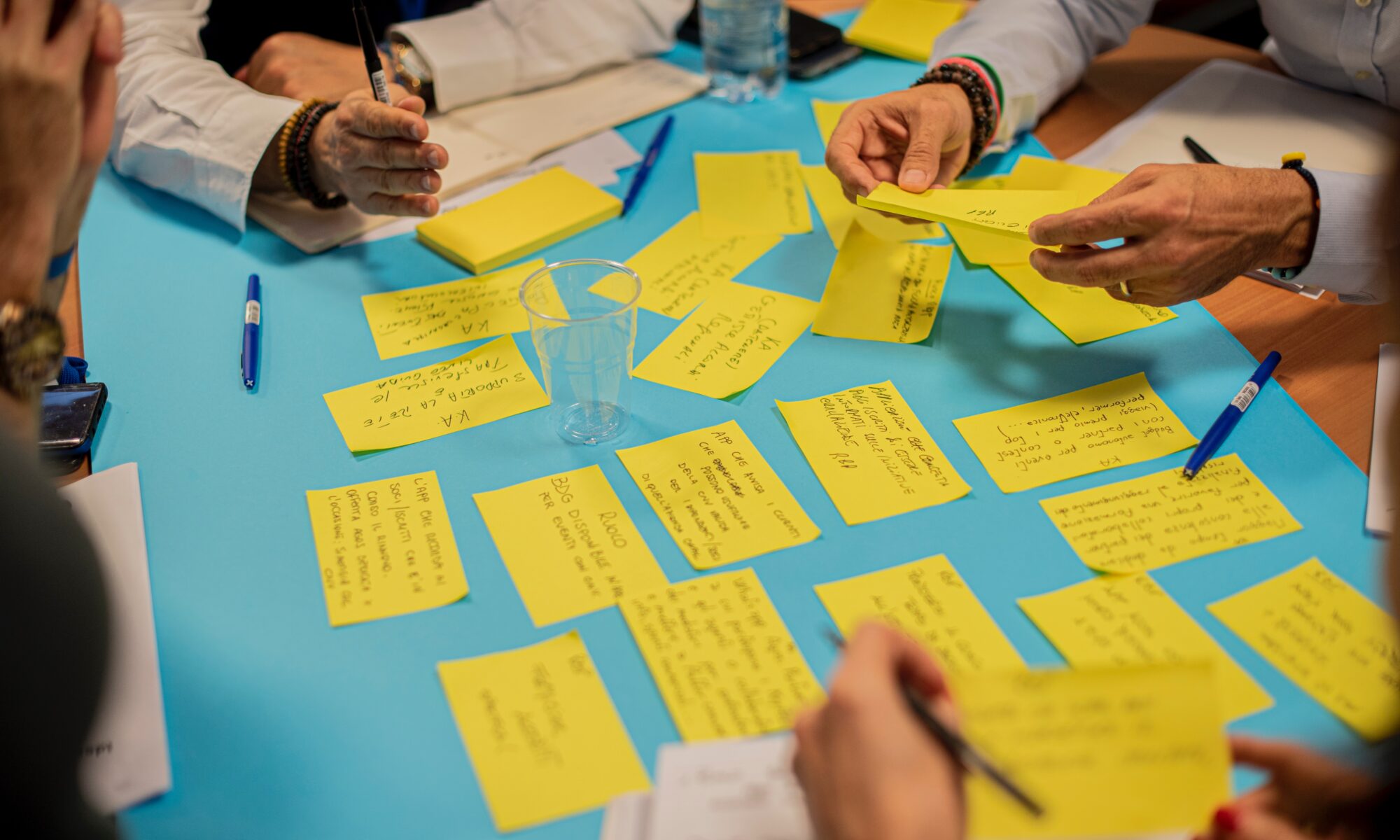What is sparring about and how is it done?
Eva, newly appointed section manager with a team of approximately 20 people, is describing a situation that has made her sad and embarrassed: due to the resource situation in her workplace, she has accepted to support another department with one team member temporarily. The employee is ok with it, and the team receiving the support (also with a newly appointed lead, Morten) are happy to have a helping hand.
Somewhere along the way an important bit of information is lost: that the employee has previously been on long-term sick leave because of stress. The employee becomes part of the scheduling just like her temporary colleagues.
The work tasks in Eva’s and Morten’s departments are almost identical, only the location is different. Morten therefore assumes that introduction and training can be skipped.
Already on her first day, the employee is under a lot of strain, and she contacts – not Eva, but Eva’s predecessor, who calls Morten on the phone and gives him a thorough scolding for not taking good care of his temporary staff.
————–0————–
Eva: Morten is obviously really mad at me for not mentioning the old sick leave thing…..and my predecessor is not super impressed with me either. I’m just so embarrassed.
Me: What could you have done differently?
Eva. Well, I could have briefed Morten on the employee’s special sensitivity…
Me: Yes, what would that have meant?
Eva: Morten would think I was over-soft!
Me: Ok. Has Morten previously indicated to you that he found you over-soft?
Eva: No, not directly….
Me: Ok. So you can’t be sure he thinks of you in that way, but obviously it is a possibility. Could you think of more ways he would react?
Eva: Yes of course. He would surely have been happy to know that he should give the employee some extra time …..
Me: Ok, if the employee had had some extra time for the work, this would have made the temporary assignment go better?
Eva: Yes, I’m pretty sure of that.
Me: I think you’re right, Morten would appreciate that background. What do you want to do now?
Eva: I really don’t know. Everyone is mad at me. The employee, Morten, my predecessor…
Me: Yes, it must be really unpleasant for you. But let’s talk about the three one at a time. Which of the three are most important to you just now?
Eva: Well, in reality I think it’s Morten. We trained for team leaders together and were appointed almost at the same date. It’s been so nice to have someone to talk to about all the new responsibilities, even though he can have a tendency to overstate himself sometimes. Deep down, he is really reliable, and has been a good friend many times in spite of our slight competition for the promotion.
Me: I completely agree, Morten will be important to you also going forward. Which options do you have to fix or improve your relationship?
Eva: I could give him an apology……
Me: For what?
Eva: For not having briefed him on the sensitivity issue, of course!
Me: I see you made a mistake by not giving him that background – and the mistake had consequences for the employee, Morten AND you. But Morten was also quick to conclude that he didn’t have to provide introduction and training to the employee. You mentioned that he might say you were over-soft. It sounds to me that you don’t feel 100% respected by him. Is that understanding correct?
Eva: Yes, that’s true. He is always VERY busy when I reach out to him. We often talk about everyday stuff, but if I need his help or attention he is difficult to connect with even for two minutes.
Me: OK…. How could you approach this, if the objective if that you and Morten should not end up in this situation again?
Eva: That’s hard……..
Me: Yes. Mistakes are inevitable, but it’s still pretty taboo to admit them or own up to the fact that you want to learn from them.
Eva: Yes for sure….
Me: The way I see it, there is not much good to say about the mistake itself. It is not the kind of error that luckily brings out new essential knowledge, like inventing pennicillin. You were all just too busy to communicate well. You probably already have company HR-processes describing how to assign stafff temporarily.
Eva: Yes.
Me: And still, I would encourage you to think in terms of structure if you’d like a change.
Eva: Please don’t say structure, we have enough meetings as it is.
Me: I believe ENOURMEOUSLY in change without meetings! But not without structure.
Eva: Hmmm. I don’t think I know what you mean.
Me: A structure can be as simple as a reminder for your conversations with Morten, regardless of whether it’s an everyday coffee chat or something more serious. A form of extra agendapoint to always remember to cover or mention. For example: “Is there anything else we should discuss”. Or ”Do you agree to everything we just discussed, or do you have reservations we didn’t cover”. Or ”Can I help with anything other than what we just spoke of”. You should be prepared to be quite firm to always bring this up!
A structure could also be more like a meeting, for example an agreement to have an informal coffee first Monday of every month.
The important point is, that you wish for change has an actual shape you can remember, and something you can add to something else already going on. An extra agenda point each time you’re on the phone with Morten is easy to remember. And a coffee each time you’re both in the same location is also easy to remember. It simply increases the likelihood of the change to happen.
Do you understand?
Eva: Yes. I think I like the idea of a regular coffee better, the other is too formal and unnatural to me. And we’re already in the same physical spot every other month.
Me: OK. So you have a few elements for a talk with Morten:
- An apology
- A wish to learn from the mistake you made – which has made you think you’re both sometimes rushing things too much and skipping important information
- A suggestion to meet over coffee when you’re physically in the same place to ensure you speak regularly
Eva: Yes, I guess that’s it.
Me: So when will you be taking this call with Morten?
————–0————–
Sparring is down to earth and close to your everyday life.
We find options and resources together, and you are motivated to act on the change you want to see. You can talk about and rehearse everyday situations and be reminded of what’s important to you.
I don’t question your motives or ask why. See more about sparring HERE.










